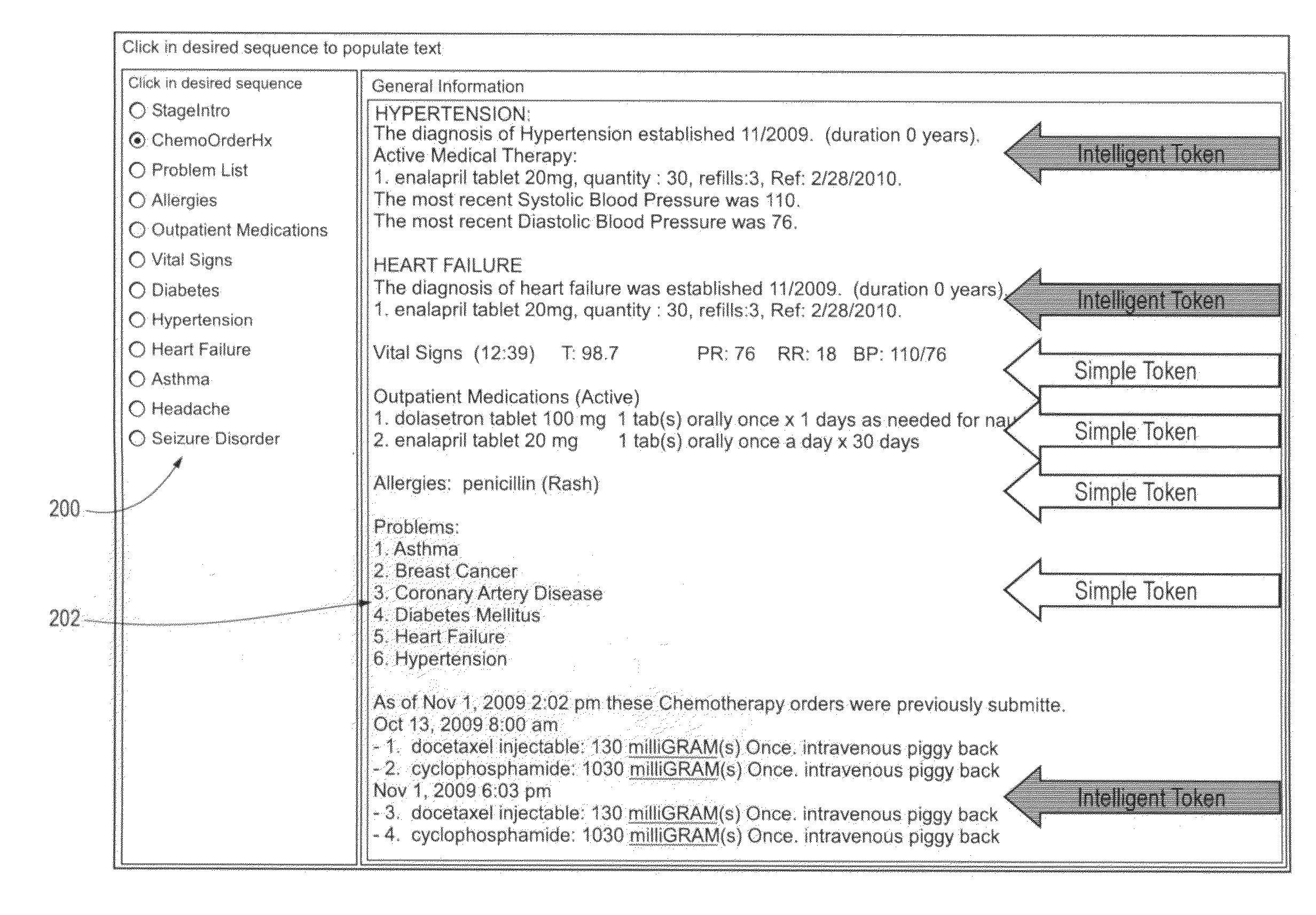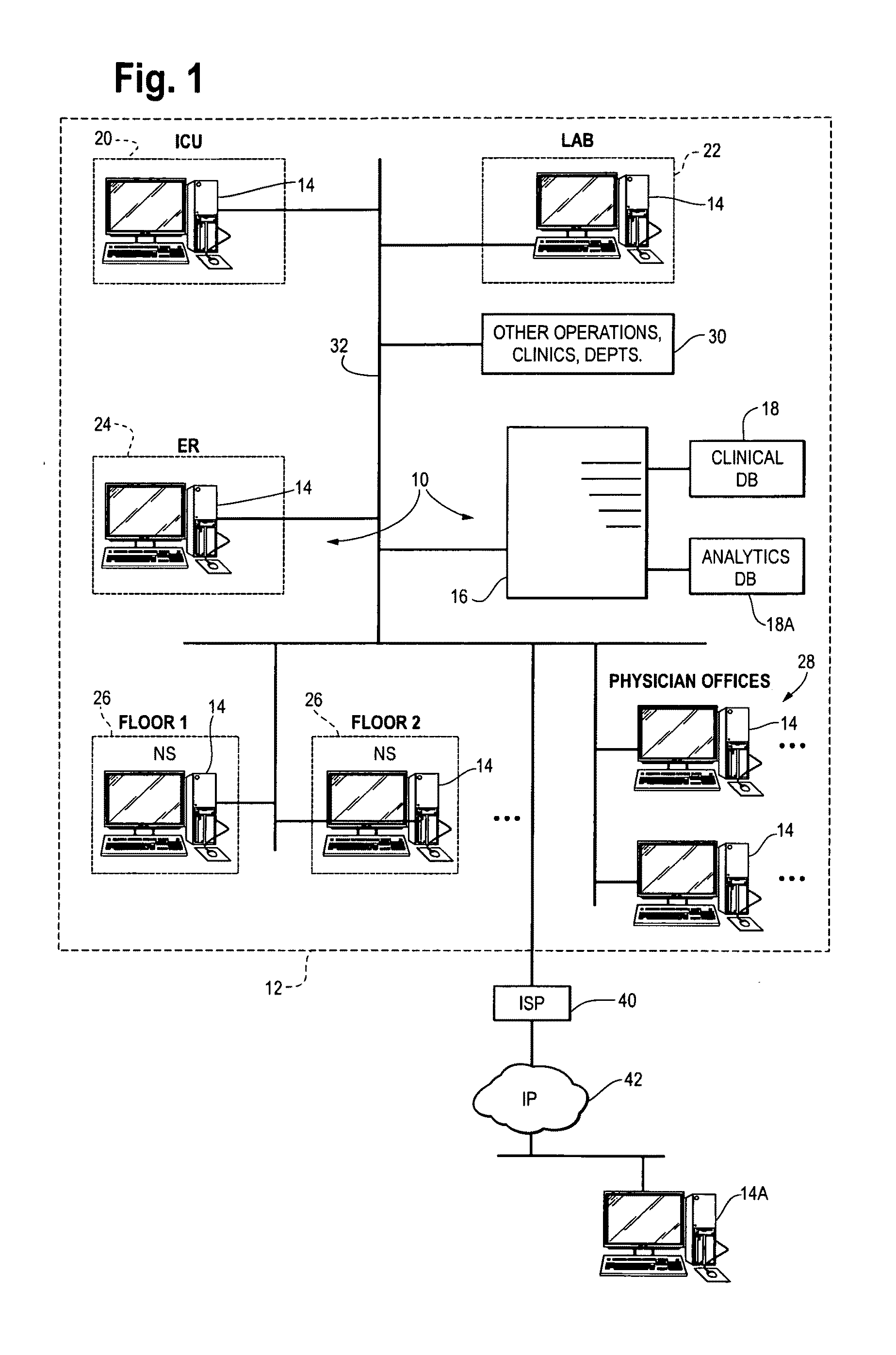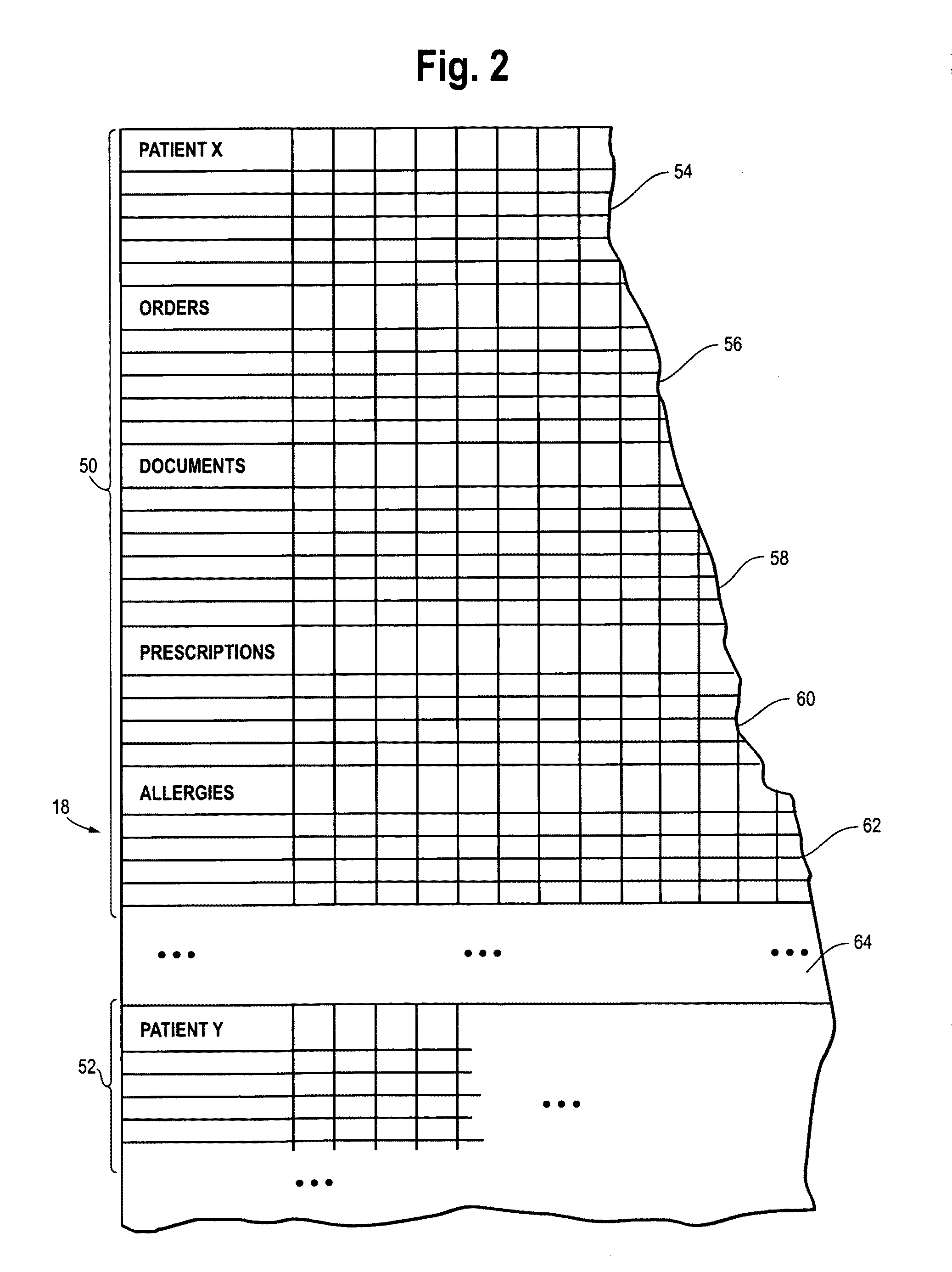Intelligent tokens for automated health care information systems
a technology of intelligent tokens and health care information systems, applied in data processing applications, instruments, medical practices/guidelines, etc., can solve the problems of requiring substantial amount of time and effort from health care providers, and the process can be very inefficient, so as to accelerate coronary artery disease
- Summary
- Abstract
- Description
- Claims
- Application Information
AI Technical Summary
Benefits of technology
Problems solved by technology
Method used
Image
Examples
example 1
Intelligent Token |DIABETES|
[0074]Consider for example an intelligent token |DIABETES|. When this intelligent token is interpreted, associated medical logic modules are executed and the following information is retrieved from the electronic patent record and presented on a workstation in conjunction with the creation or review of a progress note or other type of medical documentation:
[0075]Diabetes:
[0076]The diagnosis of type II diabetes was established Nov. 2002 (duration 7 years).
[0077]—Diabetes Medications—:[0078]1. glyBURIDE tablet 5 mg: 1 tab(s) orally once a day×30 days[0079]2. metformin tablet, extended release 1000 mg: 1 tab(s) orally once a day
[0080]The most recent Hemoglobin A1c level is 8.3 (performed on Nov. 1, 2009)
[0081]The most recent Low Density Lipoprotein level was 100 (performed on Nov. 1, 2009)
[0082]In this example, the medical logic modules associated with the |DIABETES| intelligent token did not retrieve any Associated Conditions, because there were none presen...
example 2
Intelligent Token |HYPERTENSION|
[0083]Consider in this example an intelligent token |HYPERTENSION|. The intelligent token |HYPERTENSION| is associated with medical logic modules which retrieve or derive the following items of information from an electronic patient record, if present: Disease or Condition, Duration, Associated Conditions, if any, that are present, Specific Treatments, Key Performance Indicators and Grading Scores for Key Performance Indicators. When this intelligent token is interpreted the following information is retrieved or derived for a given patent and output on the display of a workstation:
[0084]Hypertension:
[0085]The diagnosis of Hypertension established Nov. 2003 (duration 6 years).
[0086]Active Medical Therapy:
[0087]1. Altace capsule 5 mg, quantity: 30, refills: 3, Ref: Nov. 16, 2009.
[0088]The most recent Systolic Blood Pressure was 141.
[0089]The most recent Diastolic Blood Pressure was 89.
[0090]Thus, the output of this intelligent token is the disease or co...
example 3
Intelligent Token |ASTHMA|
[0091]In this example, the intelligent token is |Asthma|. The intelligent token |Asthma| is associated with medical logic modules which retrieve or derive the following items of information from an electronic patient record, if present: Disease or Condition, Duration, Associated Conditions, if any, that are present, Specific Treatments, Key Performance Indicators and Grading Scores for Key Performance Indicators. For example for a given patient the following may be the output of the intelligent token |ASTHMA|:
[0092]Asthma:
[0093]The diagnosis of Asthma established Nov. 2006 (duration 3 years).
[0094]—Systemic Steroids—:[0095]1. Pulmicort Flexhaler 90 mcg / inh inhalation powder: 1 puff(s) inhaled 2 times a day
[0096]—Relievers—:[0097]1. albuterol 0.63 mg / 3 mL (0.021%) inhalation solution: 3 mL inhaled 4 times a day as needed for Shortness of Breath
[0098]—Controllers—:[0099]1. montelukast tablet, chewable 4 mg: 1 tab(s) chewed once a day (in the evening)×30 days[...
PUM
 Login to View More
Login to View More Abstract
Description
Claims
Application Information
 Login to View More
Login to View More - R&D
- Intellectual Property
- Life Sciences
- Materials
- Tech Scout
- Unparalleled Data Quality
- Higher Quality Content
- 60% Fewer Hallucinations
Browse by: Latest US Patents, China's latest patents, Technical Efficacy Thesaurus, Application Domain, Technology Topic, Popular Technical Reports.
© 2025 PatSnap. All rights reserved.Legal|Privacy policy|Modern Slavery Act Transparency Statement|Sitemap|About US| Contact US: help@patsnap.com



